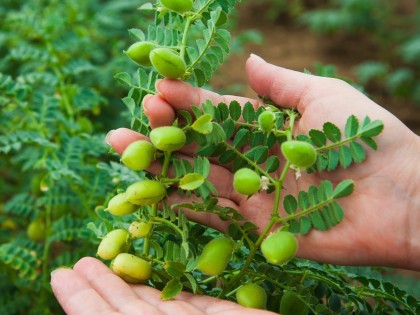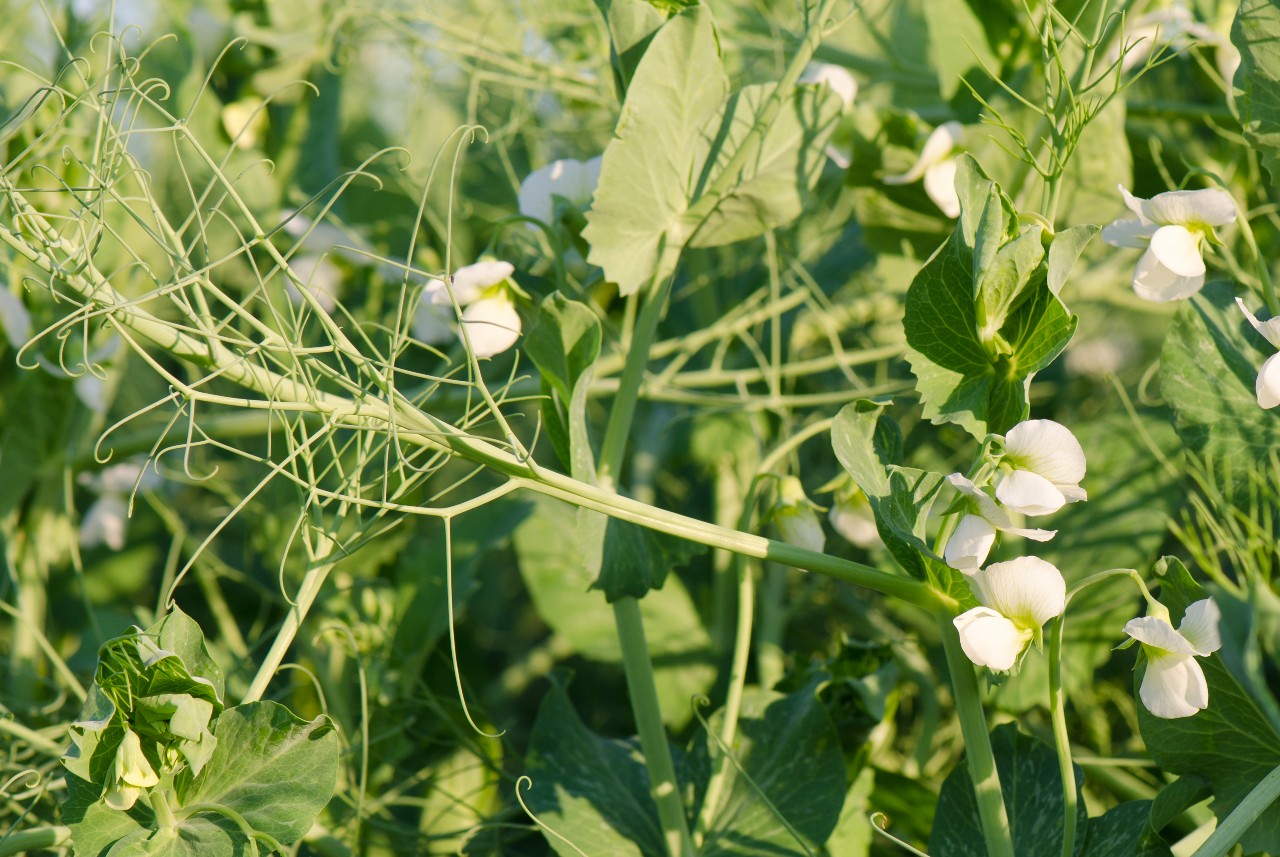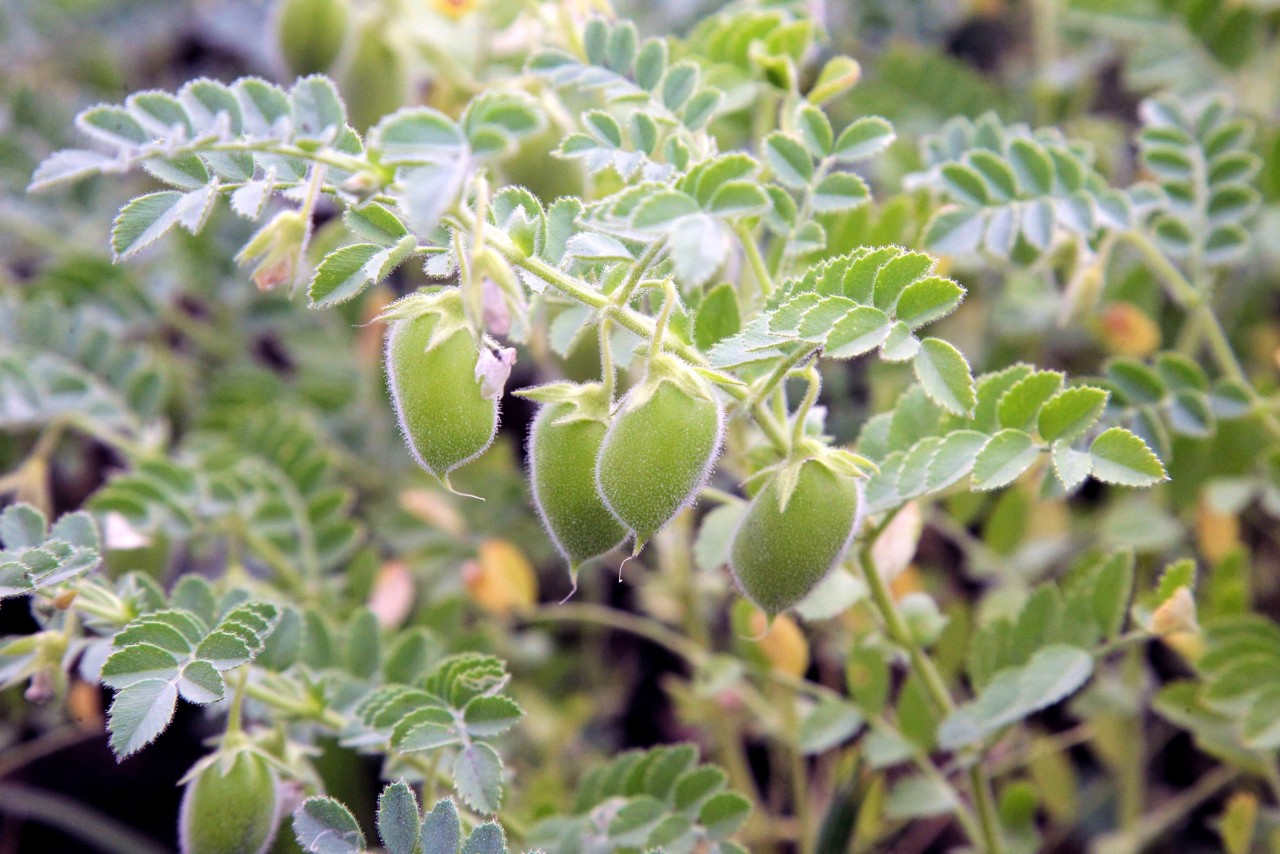
Senior Programme Leader Dr Tom Wood explains all about NIAB's Legume research, including what we are currently working on and why:
Legumes have received renewed interest recently as important break-crops that can improve sustainability in agricultural rotations by decreasing the risk of pests and diseases, providing greater control of weeds, enhancing soil structure and contributing residual nitrogen to subsequent crops.
The most widely grown legumes in the UK by area are faba bean (700,000 ha), combining pea and vining peas for fresh consumption (each around 50,000 ha).
However, lupins, lentils, chickpea and even haricot beans (Phaseolus vulgaris) are now being produced commercially as pulse crops, highlighting an increasing demand for these healthy nutritious grains, often as alternatives to meat.
NIAB has a long history of supporting variety registration for plant breeders’ rights and disease testing for the pulse descriptive list run on behalf of the PGRO (Processors and Growers Research Organisation), helping to ensure new varieties are characterised impartially and to the highest standards, and enabling growers to select the best performing and potentially profitable variety for their farms.

Faba bean research and development has been established at NIAB for 15 years, with work primarily supported through the DEFRA Pulse Crop Genetic Improvement Network (PCGIN) and other UKRI and EU-funded initiatives.
PCGIN continues to provide genetic resources, knowledge and expertise that can be exploited by academia and industry for supporting improvement and adding value to pea and faba bean crops, particularly in terms of quality and disease resistance.
NIAB has been responsible for developing genetics/genomics resources and exploiting natural diversity in faba bean for improving disease resistance against major disease including chocolate spot (Botrytis fabae), downy mildew (Peronospora viciae f sp. fabae), and Fusarium foot-rot.
We have successfully screened large numbers of diverse lines, identifying novel sources of resistance, mapping the genes involved and then providing plant breeders with linked markers to track the specific regions to crossed material.

Establishing new genetics tools, pre-breeding pipelines and screening strategies for disease and quality through our various collaborative projects has provided a foundation for developing greater legume research capability at NIAB. In recent years’ research interests have extended to species like lentil, chickpea and even Phaseolus bean.
Although historically cultivated in Europe and Mediterranean regions, working on crops from temperate and even tropical regions allows us to interact with overseas collaborators to support crop improvement in developing countries, whilst enabling us to improve our knowledge and considering how to address similar types of challenges to agriculture in the UK.
Limiting the effects from a variable climate, such as drought or heat, and avoiding disease caused by an array of different pathogens are key strategies for maintaining yield and quality in many crops. Understanding how to mitigate against these are of course major priorities for the legume programme at NIAB.
For more on Tom's research and work on legumes see:
This article originally appeared in the Spring 2023 edition of NIAB’s Landmark magazine. Landmark features in-depth technical articles on all aspects of NIAB crop research, comment and advice. You can sign up for free and get Landmark delivered to your door or inbox:
